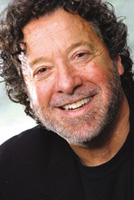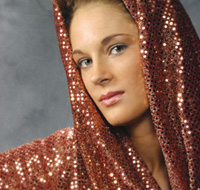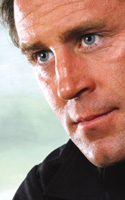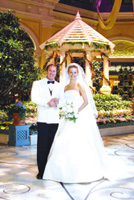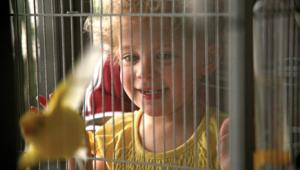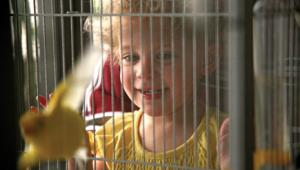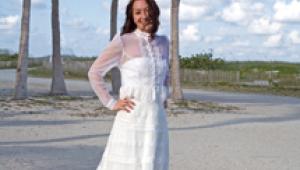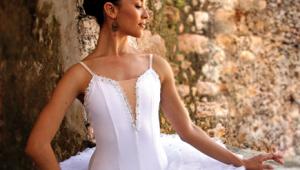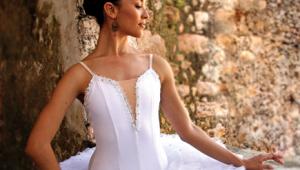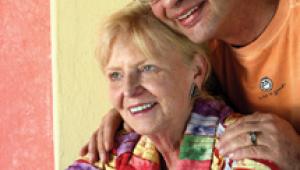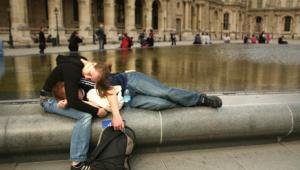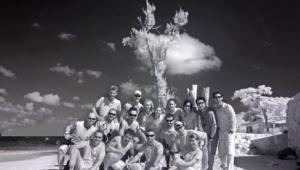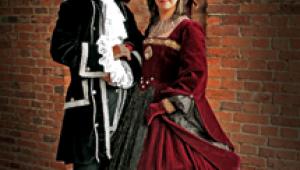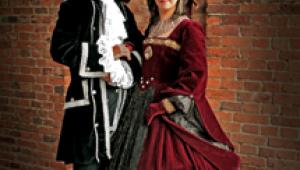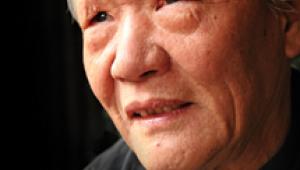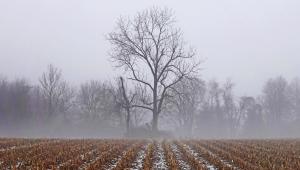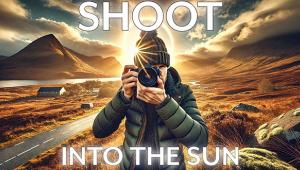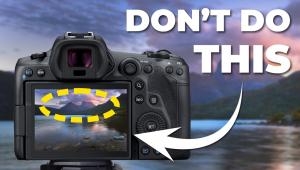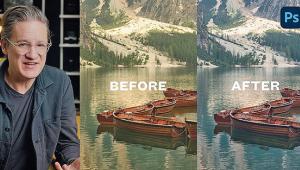Master Class
The Canon D60 Love At First Sight
Ever fall in love with a camera? Well, that's exactly what happened to me when I was handed a beta advance version of Canon's new D60 digital camera at the PMA show. I had experienced the D30 camera for the past year and had basically been reinventing myself almost on a daily basis through the excitement of carrying over my traditional photographic background into the new world of digital imaging. I was wondering how this new camera would affect me and/or my photography. I didn't have to wait long. I had the new camera in my hands literally only moments before I was to demonstrate it in Canon's booth at the show. It looked and felt almost the same as my D30. That was good. In seconds I learned that its performance was remarkably smoother and easier than I could ever have anticipated. See this picture of our models, Nikki and JJ? See the happiness in their eyes? The smile on their faces? The excitement in the entire image? That's how I felt with my new D60. Let's talk about it. A Pro's Perspective |
|||
Portrait Sessions I was told that one of the most important advances of the camera was its improved autofocusing capability in low light. It was there for me. I had the camera on automatic focus. I had the focus point selected to be the upper-third of the viewfinder when I held the camera in its vertical position. It clicked in without fail every single time. That put my mind to rest immediately. I could concentrate on my subjects. I wasn't worried about exposure, because I could use the results of each test shot as my metering device. With each successive image appearing only moments after the exposure I was able to see what I was doing and how close I was to optimum exposure. I had the camera set on Manual, so that it would record only the burst of strobe. I wasn't interested in recording any of the ambient light. I was mainly interested in capturing the personality of each of my subjects. Truly, photographers think of themselves as their own worst subjects. I found the challenge of photographing my fellow photographers exciting and challenging. Put yourself in my position, if you can. You have a minute or so to come up with a portrait of each of your subjects--each and every one of them a star in his/her own right. You don't want to have to worry about the camera. You want/need to concentrate only on capturing the spirit of each one of them. One of my subjects was Robert Farber. I had long been a collector of his posters. Who could afford an original Farber image? Robert and I have, during the past year, worked together for Canon. I knew him to be a fun, gifted, and extremely talented pro. He makes me feel good in his company. I'm sure he does the same with each of his subjects. I think that I captured his personality in this very first picture I took of him. |
|||
Square Format Fan? Crop!
In this case, for instance, I liked the picture as a square. And with the new, larger file size that I'm getting out of my new camera I can crop and still have enough of a file size that I don't have to worry about it. Heck, I saw absolutely huge prints that were made directly from D60 files at the PMA show and they looked flawless! I certainly can't see ever making portraits that large, so I just know that I can still maintain the integrity of my final images even when using just a portion of the original file. |
|||
Group Shot I had two posing stools already on stage. I sat Mike and Barbara Bordnick. Then, I simply told the others to group around beside and behind them, set up to expose with a single light behind me and picked up the camera. Just as I was about to refine the posing I noticed the makeup person touching up Mike's face, so I pushed the automatic focus button and clicked the shutter. The rest is history. |
|||
How Sharp Is It? |
|||
What About Deeper Skin Tones?
|
|||
How About Delicate Skin
Tones? |
|||
Nature's Glory I was at once intrigued by the natural formation of stone, the delicateness of the tonal range of the rocks, and the incredible portrait lighting that I recognized there right in the middle of the day. What difference did it make if I were photographing a face, a landscape, or a slice of nature? Light coming from behind and from the side was creating a three-dimensional image that just cried out to be memorialized. |
|||
I'm still wondering if many visitors to the park have stopped to see the remarkable natural form of this particular spot; wondering if the light was ever as beautiful as it was for me at that moment in time; and wondering if the digital capabilities of the D60 enhanced the capture, or if it just enabled me to capture what was always there, but not visible in such infinite detail as it turned out to be when I first viewed this image on my computer screen. Mixed Light Performance The D60 blended all the lights into a natural color that would have been almost impossible for me to believe had I not seen how beautifully it worked for myself. As a matter of fact, I did very little manipulation of color on all of these photographs after downloading them from the camera. The color was unbelievably true throughout all my picture taking. |
|||
Outdoor Portraits, In The
Shade Final Recommendation For more of Monte's information visit his web site: www.zuga.net. |
- Log in or register to post comments

